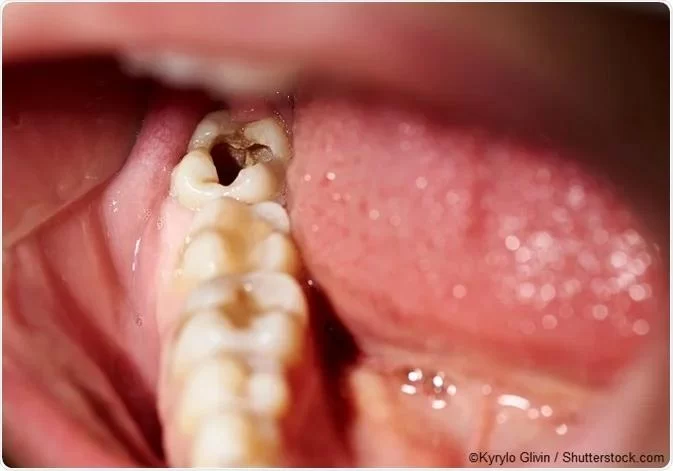
How to Treat Tooth Decay in Adults: Effective Methods and Prevention Tips
- 1. Understanding Tooth Decay in Adults
- 2. Treatment Options for Tooth Decay in Adults
- 3. Natural Remedies for Tooth Decay
- 4. How to Prevent Tooth Decay in Adults
- 5. When to See a Dentist for Tooth Decay
- 6. Real-Life Experience and Success Stories
1. Understanding Tooth Decay in Adults
Tooth decay is a common oral health issue that affects many adults. It occurs when the bacteria in your mouth produce acids that attack the enamel of your teeth, leading to cavities. Adults are not immune to this condition, even if they have had healthy teeth in the past. Factors like diet, oral hygiene, and genetics can all contribute to the development of tooth decay.
Common signs of tooth decay include tooth sensitivity, visible holes or pits, and pain when eating hot or cold foods. Understanding how tooth decay starts and progresses can help you take steps to treat and prevent it.
2. Treatment Options for Tooth Decay in Adults
Once tooth decay has begun, there are several treatment options available depending on the severity of the condition:
- Fillings: For small cavities, dental fillings are the most common solution. The decayed part of the tooth is removed, and the cavity is filled with a material like composite resin or amalgam.
- Root Canals: If decay reaches the inner pulp of the tooth, a root canal may be necessary. This treatment removes the infected pulp, and the tooth is sealed to prevent further damage.
- Crowns: In cases of extensive decay, a crown might be used to cover and protect the weakened tooth.
- Extraction: In severe cases where the tooth cannot be saved, extraction may be necessary. This is typically followed by a replacement option like dental implants or bridges.
Consulting with a dentist as soon as you notice any symptoms of tooth decay is crucial for preventing further damage and avoiding more invasive treatments.
3. Natural Remedies for Tooth Decay
While professional dental treatment is often necessary to fix tooth decay, there are some natural remedies that may help slow the progression or provide relief from discomfort. Here are some natural methods to consider:
- Oil Pulling: Swishing coconut oil in your mouth may help reduce plaque buildup and bacteria that contribute to tooth decay.
- Green Tea: Green tea is rich in antioxidants and may help reduce oral bacteria, which can help in the prevention of decay.
- Calcium-Rich Foods: Foods like cheese, yogurt, and leafy greens can help remineralize teeth and reduce the risk of further decay.
- Clove Oil: Clove oil has natural antibacterial properties and may help soothe tooth pain caused by decay.
These remedies should be used in conjunction with professional dental care, not as substitutes for it. They may help support your oral health, but they cannot replace proper treatment for severe tooth decay.
4. How to Prevent Tooth Decay in Adults
Preventing tooth decay in the first place is always the best approach. Here are some essential tips for keeping your teeth healthy:
- Brush Regularly: Brush your teeth at least twice a day using fluoride toothpaste to remove plaque and bacteria.
- Floss Daily: Flossing helps remove food particles and plaque from between your teeth, where a toothbrush may not reach.
- Limit Sugary Foods and Drinks: Sugar is a major contributor to tooth decay, as it feeds the bacteria in your mouth. Try to limit sugary snacks and drinks.
- Visit the Dentist Regularly: Routine dental checkups can help detect early signs of decay before they become serious issues.
Good oral hygiene, a balanced diet, and regular dental visits are the best strategies for preventing tooth decay and maintaining healthy teeth for life.
5. When to See a Dentist for Tooth Decay
If you suspect you have tooth decay, it’s important to seek professional care right away. Some early signs include tooth sensitivity, visible cavities, or pain when eating. If left untreated, tooth decay can lead to more severe complications, including infection or even tooth loss.
Don't wait until the pain becomes unbearable or the damage worsens. Early intervention can save your teeth and prevent more costly treatments later on.
6. Real-Life Experience and Success Stories
Many adults have successfully treated and prevented tooth decay by adopting better oral hygiene habits and seeking timely professional treatment. For example, Sarah, a 35-year-old woman, noticed increased tooth sensitivity and sought dental help early. After getting a filling and following her dentist's advice, she was able to keep her tooth intact and avoid further decay.
Success stories like Sarah’s show that with proper care and treatment, tooth decay doesn’t have to result in major oral health problems. If you take the right steps, you can maintain your smile for years to come.







 OMG! Braces4.0 (279 review)
OMG! Braces4.0 (279 review) Noll Family Dentistry4.0 (95 review)
Noll Family Dentistry4.0 (95 review) South Corona Dental Group4.0 (287 review)
South Corona Dental Group4.0 (287 review) Tigard Modern Dentistry4.0 (169 review)
Tigard Modern Dentistry4.0 (169 review) Gage Dental Care4.0 (130 review)
Gage Dental Care4.0 (130 review) Big Smiles Dental, Inc4.0 (22 review)
Big Smiles Dental, Inc4.0 (22 review) The Importance of Oral Health Education During Pregnancy for a Healthy Pregnancy
The Importance of Oral Health Education During Pregnancy for a Healthy Pregnancy Best Tips for Brushing Your Teeth Properly for Healthy Gums: Essential Techniques for Oral Health
Best Tips for Brushing Your Teeth Properly for Healthy Gums: Essential Techniques for Oral Health Why Skipping Dental Checkups Can Lead to Bigger Oral Health Problems
Why Skipping Dental Checkups Can Lead to Bigger Oral Health Problems Advantages of Porcelain Dental Restorations
Advantages of Porcelain Dental Restorations How Can Diabetes Cause Tooth and Gum Problems? Preventing and Managing Oral Health Issues
How Can Diabetes Cause Tooth and Gum Problems? Preventing and Managing Oral Health Issues Healthy Habits for Promoting Good Oral Health and Hygiene: Tips for a Healthy Smile
Healthy Habits for Promoting Good Oral Health and Hygiene: Tips for a Healthy Smile